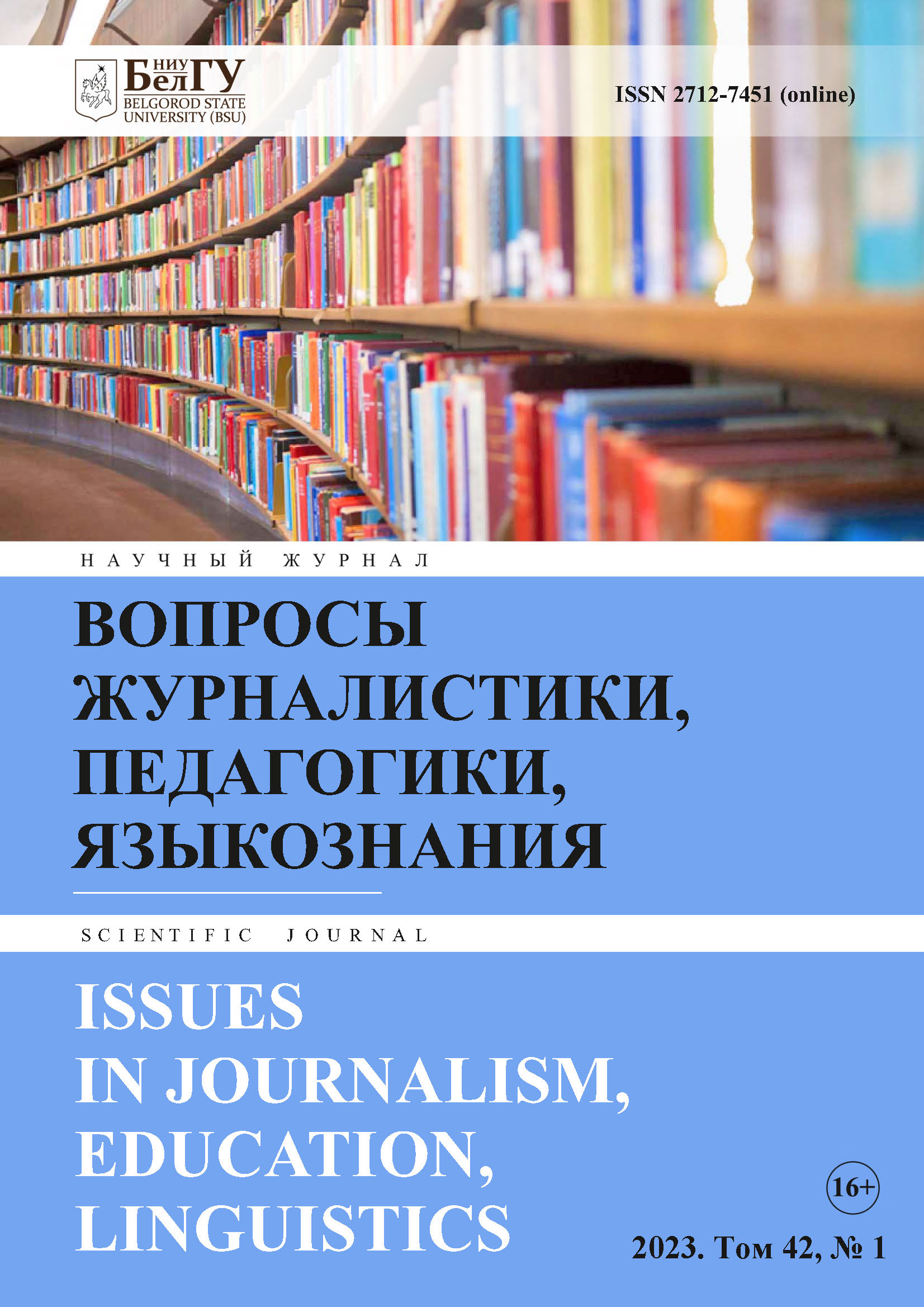English Idioms and Phrases as the Reflection of language and Culture Symbiosis
DOI:
https://doi.org/10.52575/2712-7451-2023-42-1-114-125Keywords:
language and culture interaction, idiom, modern English, biblical idioms, borrowed idioms, idioms from literatureAbstract
The article deals with the peculiarities of idioms productivity based on the example of English culture. The authors analyze the peculiarities of historical, cultural and language aspects of idioms functioning in modern English. According to the research work, English idioms are characterized as the language substance presenting its cultural heritage. Modern English is characterized by the development of figurative, idiomatic meaning in terminological expressions, still it possesses the characteristic features from the language and cultural past revealed in the form of idioms and phrases. The authors stress, that biblical idioms present the main part of idioms’ units range typical for modern English usage today. Idioms of classic literature origin come next in popularity due to necessity to follow customs and traditions of national culture. Finally, idioms from artworks by W. Shakespeare and W. Scott outperformed other English authors in popularity while using idioms by common people in everyday life aspects. To conclude, the lexical level of modern English has some number of borrowed idioms from foreign literature authors: authors from the USA and France have had the most significant impact on the state of the English language today; so, American and French idioms are of productive usage level in the modern English language functioning.
References
Adelina C., Suprayogi S. 2020. Contrastive analysis of English and Indonesian idioms of human body. Linguistic and Literature Journal, 1(1): 21–27. DOI: 10.33365/llj.v1i1.235
Alrajhi A.S. 2020. Static infographics effects on the receptive knowledge of idiomatic expressions. Indonesian Journal of Applied Linguistics, 10(2): 315–326. DOI: 10.17509/ijal.v10i2.28596
Anderson S., Pelteret C. 2012. Work on your idioms. London, Harper Collins Publishers, 127 p.
Awonusi M. 2002. Man-made language. London, Routledge, 76 p.
Baghana J., Prokhorova O.N., Voloshina T.G., Raiushkina M.Y., Glebova Y.A., 2018. Some Aspects of African Study in the Era of Globalization. Espacios, 39(38): 26–32 (in Spain).
Beck S.D., Weber A. 2020. Context and Literality in Idiom Processing: Evidence from Self-Paced Reading. Journal of Psycholinguistic Research, 49: 837–863.
Bruening B. 2019. Idioms, collocations, and structure. Syntactic constraints on conventionalized expressions. Nat Lang Linguist Theory, 38: 365–424. DOI: 10.1007/s11049-019-09451-0
Chen L. 2020. Application of Compensatory Translation Approach to English Idioms. Journal of Language Teaching and Research, 11(6): 978–982. DOI: 10.17507/jltr.1106.15
Kachru B.В, Nelson С.L., Kachru Y. 2006. The Handbook of “World Englishes”. Blackwell Publishing Ltd, 911 p.
Kemertelidze N., Giorgadze M. 2020. One Approach to Idioms and Their Peculiarities in the English Language. European Scientific Journal, 16(11): 13. DOI: 10.19044/esj.2020.v16n11p13
McCarthy M., O’Dell F. 2004. English phrasal verbs in use. Cambridge University Press, 208 p.
Philip G. 2007. Idioms. In: The Linguistics Encyclopedia. Ed. K. Malmkjaer. London, UK, Routledge: 266–269.
Seidl J. 1989. English idioms. Oxford University Press, 95 p.
The Oxford Dictionary of Idioms. 2004. Ed. J. Siefring. New York, Oxford University Press Inc., 352 p.
Thomas J. 1999. Advanced vocabulary and idiom. Longman, 129 p.
Turker E. 2019. Idiom acquisition by second language learners: the influence of cross-linguistic similarity and context. The Language Learning Journal, 47(2): 133–144. DOI: 10.1080/09571736. 2016.1221441
Wright J. 2002. Idioms organizer. Eds. J. Hill, M. Lewis. Heinle, Thompson, 294 p.
Yule G. 2017. The study of language. Cambridge, United Kingdom, Cambridge University Press, 116 p.
Abstract views: 272
Share
Published
How to Cite
Issue
Section
Copyright (c) 2023 Жером Багана , Ван Ци, Жанат Николаевна Бисенбаева

This work is licensed under a Creative Commons Attribution 4.0 International License.


